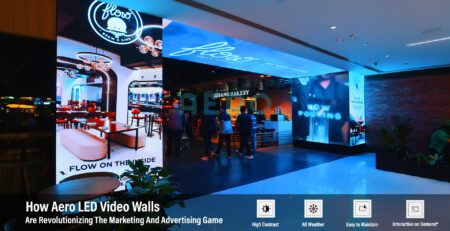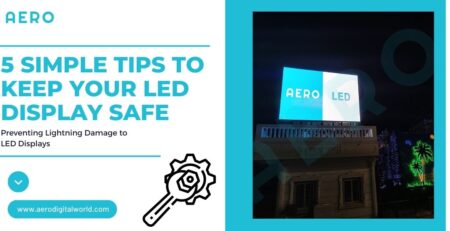Differences Between Quantum Dot Screen and LED Technology
A Comprehensive Guide to the Differences Between Quantum Dot Screen and LED Technology
Are you looking for the perfect television to suit your home?
Perhaps you have heard of quantum dot screens and LED technology and are wondering which is the best choice. With so many models and features available, it can be tricky to decide which type of screen is the most suitable for you. To make your decision easier, this comprehensive guide will explain you the differences between quantum dot screen and LED technology, below we are giving you the information you need to make an informed choice.
We will look at the advantages and disadvantages of both types of screens, as well as the key features of each one. By the end of this guide, you will have the knowledge to make the right choice for you.
So, let’s get started and explore the differences between quantum dot screens and LED technology.
What is a Quantum Dot Screen?


If you are wondering what a quantum dot screen is, you are not alone. Quantum dots are a relatively new technology, so even many industry experts are still discovering the benefits of this emerging screen type. The screen type is more accurately called “Quantum Dot Enhancement Film” (QDEF), but you will often see it referred to as “Quantum Dot” for simplicity.
Quantum dot technology is used in a wide range of consumer electronics, including televisions, computer monitors, laptops, smartphones, and tablets. However, televisions are one of the most popular applications for quantum dot screens.
A quantum dot screen is similar to an LED screen in that it is an advancement on traditional screen technology. The technology behind the quantum dot screen is complex, so it is helpful to break down the process into three stages. First, the screen uses a blue LED light source to illuminate red, green, and blue phosphor dots. The phosphors then convert the light into photons, which create a broader range of colors thanks to quantum mechanics.
The second stage occurs when these quantum dots use the photons to create a full spectrum of colors. Finally, the screen uses a light guide to distribute the newly created full spectrum of colors across the entire screen. Quantum dot screens are particularly useful in creating a high-quality picture that looks lifelike. They do this by emitting brighter colors, which makes the images appear as if they are “alive”.
Additionally, quantum dot screens have excellent color accuracy, which makes them a great choice for creatives.
Finally, quantum dot screens have a high color gamut, which gives them a great contrast ratio. This means that they display deep, vibrant colors, making them ideal for watching movies and playing video games. When combined with a high refresh rate, the result is a seamless viewing experience.
What is LED Technology?


If you are wondering what is LED technology, it is important to understand what an LED is first. An LED is a semiconductor device that emits light when an electric current is applied. They were first discovered in the 1950s, but it was not until the 1980s that they became commercially available. Since then, they have become the most widely used form of lighting on the planet.
Those who are wondering what is LED technology will often associate it with the color blue, which is one of the most common uses of the technology. However, this is just the tip of the iceberg. LEDs are often referred to as “coloured light emitting diodes”, which gives you a better idea of their wide range of applications. To begin with, LEDs are small and thin, which makes them ideal for television screens.
They are also energy efficient, so they are cost-effective to use. In addition, LEDs are bright and can display a wide range of colors, making them perfect for televisions.
Advantages of Quantum Dot Screen
There are many advantages to a quantum dot screen, but the most significant is its colour accuracy. Quantum dot screen has excellent colour accuracy, which makes it a great choice for creatives. This is thanks to its wide colour gamut, which makes it easy to create vivid, lifelike images.
Another advantage of a quantum dot screen is its contrast ratio. It has a high contrast ratio, which means that it can create deep and vibrant colours. This makes it ideal for watching movies and playing video games.
Finally, the Quantum dot screen has a high refresh rate, meaning that it has virtually no motion blur. This makes it easy to see what is happening during fast-paced scenes, so it is great for sports fans.
Advantages of LED Technology
LED technology has many advantages, the most significant of which is its brightness. LEDs are bright, meaning that they are able to produce high-quality images that look lifelike. They are also energy efficient, making them cost-effective to use.
Another advantage of LED technology is its colour range. LEDs are able to display a wide range of colours, making them ideal for televisions.
Disadvantages of Quantum Dot Screen
Quantum Dot Screens are becoming increasingly popular in the modern world, but they are not without their drawbacks. One of the major disadvantages of Quantum Dot Screens is their price.
While they are cheaper than OLED screens, they are still significantly more expensive than standard LCDs. They also require more power than LCDs, making them more expensive to run. Another issue is the limited viewing angles. While Quantum Dot Screens have an improved viewing angle compared to LCDs, they are still not as good as OLEDs.
Finally, Quantum Dots do not always produce the most accurate colors. While they offer a wide range of colors, they are not always as accurate as OLED screens. These are the main disadvantages of Quantum Dot Screens. While they offer some advantages, it is important to consider their disadvantages before investing in one.
Disadvantages of LED Technology
LED screen technology has revolutionized the way we display ads, movies, and other media. Its low energy consumption, superior clarity, and vibrant colors have made it the go-to choice for many businesses. However, there are some potential drawbacks to using LED screens.
For one thing, they often require more initial setup and maintenance compared to other display technologies. The cost of purchasing and installing an LED screen can be quite high, and they may need to be replaced more often than other types of screens.
Additionally, they may be more prone to potential technical issues, like flickering or power surges. Finally, they may be more difficult to customize compared to other types of screens. All these factors should be taken into consideration when deciding whether or not to use LED screens.
Conclusion
There are many differences between quantum dot screens and LED technology, but there are also many similarities. Both technologies are great for watching movies, gaming, and creating vivid, lifelike images.
However, the quantum dot screen is better suited to those who prefer vivid colours, while LED technology is better suited to those who prefer a lifelike image.
Quantum dot screen is a newer technology, so it is expected to become more popular as it becomes more widely known. It is also more expensive than LED screens, but with its excellent colour accuracy, the quantum dot screen is well worth the price.






Leave a Reply